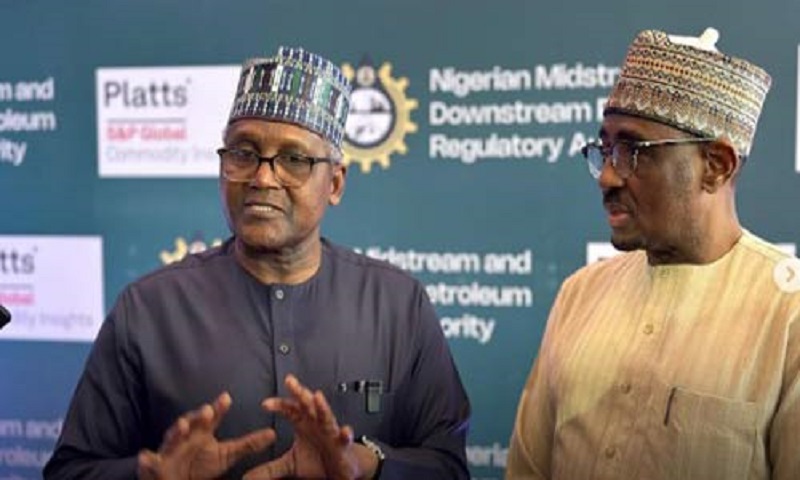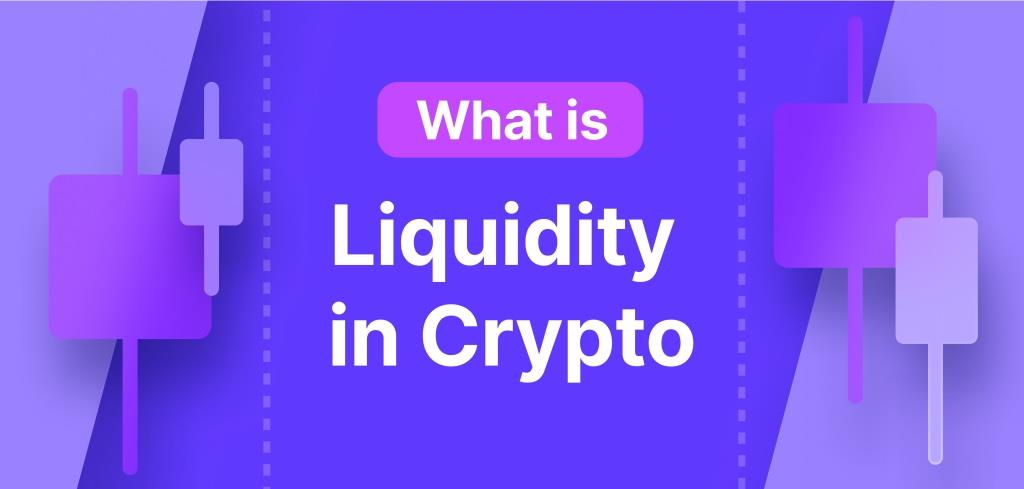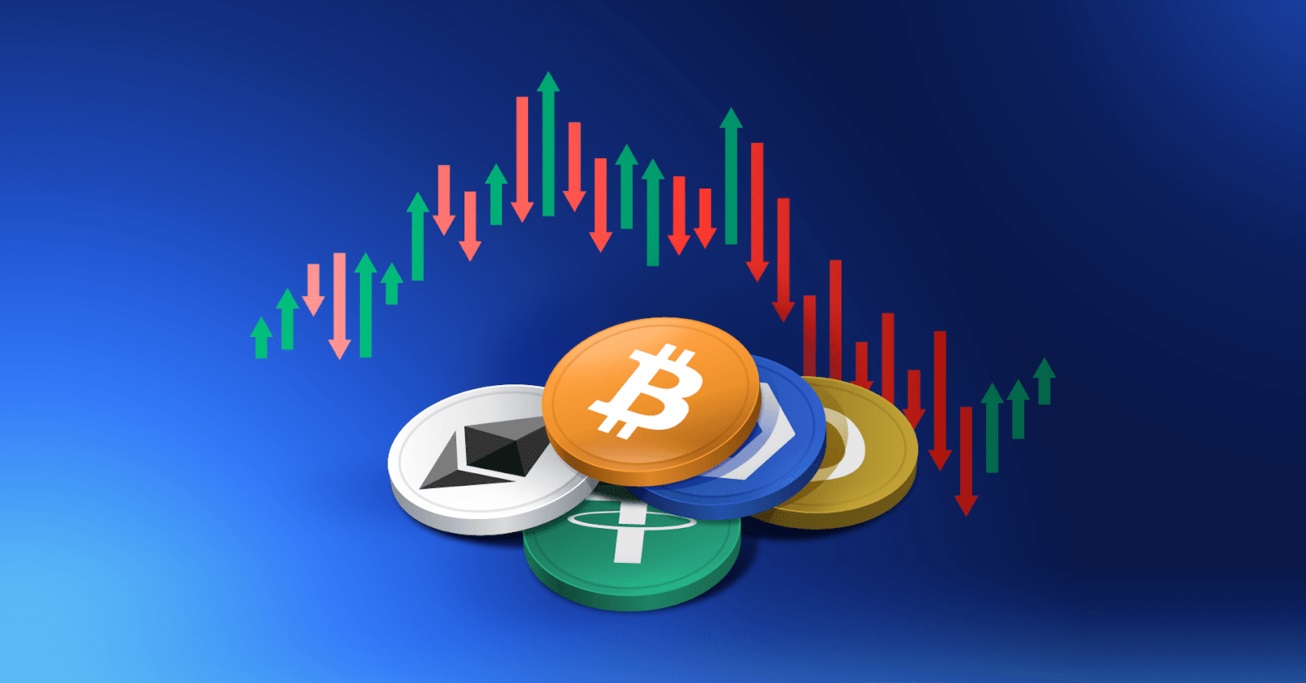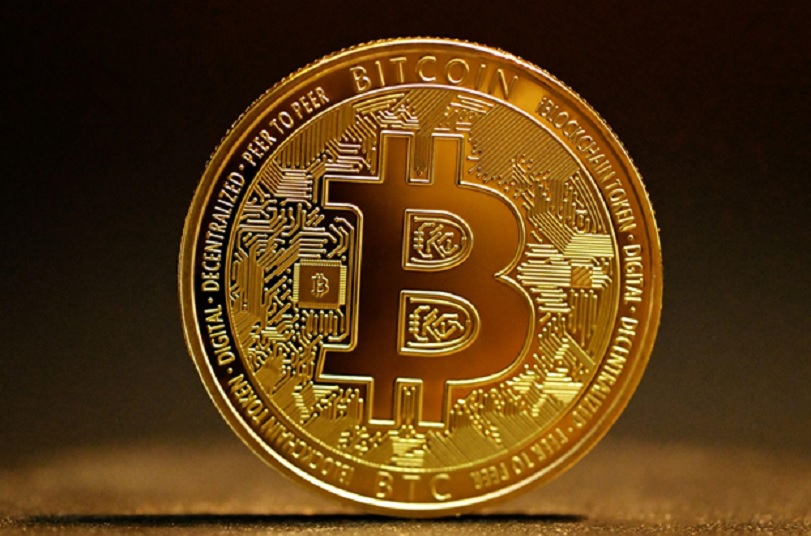Feature/OPED
Battling Hyperinflation: How Savecoins Technologies Can Empower Low-Income Nigerians to Hedge Against Inflation with USDT

By Godstime Joseph Asukwo
Abstract
This paper examines the devastating impact of hyperinflation on low-income earners in Nigeria, where the Nigerian Naira has plummeted to a record low of 1,600 Naira to 1 US dollar. By analyzing Savecoins Technologies Inc.’s efforts to offer a platform for hedging savings in USDT, a stablecoin, this paper evaluates the effectiveness of such a product for this vulnerable demographic. It offers a comprehensive, data-driven analysis of the challenges and opportunities, along with actionable recommendations for how we, at Savecoins, can build sustainable, long-term solutions to help Nigerians secure their financial future amidst economic instability.
Introduction
The Nigerian economy has been ensnared in a relentless cycle of hyperinflation for several years, pushing the country into a state of unprecedented economic crisis. The official exchange rate of the Naira against the US dollar, once a manageable 300 Naira to 1 USD in 2021, has skyrocketed to a staggering 1,600 Naira to 1 USD in 2024. This hyperinflationary crisis has disproportionately impacted low-income earners, severely eroding their purchasing power and making it increasingly difficult to afford basic necessities.
The impact on low-income Nigerians is far more than just a matter of numbers. It’s about families struggling to feed their children, facing agonizing choices between healthcare and rent, and losing hope for a brighter future. In 2021, a family with an income of 50,000 Naira could live comfortably. Today, that same family faces a stark reality – they might only be able to purchase 1/3rd of what they could back then. This is a crisis of purchasing power, and it’s impacting millions of Nigerians.
Here is a concrete example of how prices have skyrocketed in recent years, based on real-time data:
Table 1: Inflation Impact on Essential Goods (2021 vs. 2024)
| ITEM | 2021 PRICE (NGN) | 2024 PRICE (NGN) | INCREASE (%) |
| 50kg Bag of Rice | 20,000 | 75,000 | 275% |
| 1 Liter of Petrol | 165 | 1,300 | 685% |
| Transportation (Bus Fare) | 100 | 500 | 400% |
| Basic Healthcare Consultation | 2,000 | 4,500 | 125% |
| Monthly Rent (1 Room Apartment) | 5,000 | 12,000 | 140% |
| 1 Crate of Eggs | 500 | 8,000 | 1500% |
| Monthly Electricity Bill | 3,000 | 7,000 | 133% |
| 1kg of Beef | 1,500 | 3,800 | 153% |
These numbers paint a stark picture of the financial hardship faced by low-income Nigerians. A family that could afford a decent basket of food, transportation, and basic healthcare in 2021 is now struggling to meet even those essential needs.
The Impact on Low-Income Households
Consider a family with a monthly income of 100,000 Naira, a common income level for many low-income households in Nigeria. In 2021, this family could have allocated their income as follows:
Table 2: Hypothetical Family Budget (2021)
| EXPENSE CATEGORY | 2021 BUDGET (NGN) | PERCENTAGE OF INCOME |
| Food | 30,000 | 30% |
| Rent | 15,000 | 15% |
| Transportation | 10,000 | 10% |
| Education | 10,000 | 10% |
| Healthcare | 5,000 | 5% |
| Utilities | 10,000 | 10% |
| Savings | 20,000 | 20% |
Now, in 2024, due to hyperinflation, this same family faces a drastically different reality:
Table 3: Hypothetical Family Budget (2024)
| EXPENSE CATEGORY | 2024 BUDGET (NGN) | PERCENTAGE OF INCOME |
| Food | 50,000 | 50% |
| Rent | 25,000 | 25% |
| Transportation | 10,000 | 10% |
| Education | 15,000 | 15% |
| Healthcare | 10,000 | 10% |
| Utilities | 15,000 | 15% |
| Savings | -25,000 (Deficit) | -25% |
This hypothetical family is now forced to allocate almost all of their income to basic necessities, leaving them with a substantial deficit and no room for savings. This scenario is a stark reality for millions of low-income earners in Nigeria, highlighting the urgent need for solutions to combat hyperinflation and protect their financial well-being.
Understanding the Target Audience
Low-income earners in Nigeria are particularly vulnerable to the effects of hyperinflation. They often lack access to traditional financial instruments, including bank accounts, which can help to mitigate the effects of inflation. They rely heavily on cash and informal savings mechanisms, making them highly susceptible to the rapid erosion of purchasing power.
USDT: A Potential Hedge Against Inflation
USDT, a stablecoin pegged to the US dollar, offers a potential solution to this problem. By pegging its value to the US dollar, USDT provides a stable store of value, shielding its holders from the volatility of local currencies. This makes it an attractive alternative for those looking to preserve their savings in a hyperinflationary environment.
Savecoins: Bridging the Gap
We, at Savecoins, recognize the urgent need for accessible and secure financial solutions for low-income earners. Our platform is designed to empower this vulnerable demographic by offering a simple and user-friendly way to convert part of their Naira savings into USDT, effectively hedging against the devastating effects of inflation.
The Savecoins Advantage
Savecoins utilizes a decentralized and secure blockchain-based system, offering a secure and transparent platform for managing digital assets. We are constantly working to improve user experience and provide the following features:
Ease of Use: We have designed our platform to be intuitive and user-friendly, even for those with limited digital literacy.
Accessibility: Users can access our platform on their mobile devices or through a web browser, making it easily accessible to a wider audience.
Security: We prioritize the security of user funds, implementing robust security measures to protect against fraud and cyberattacks.
Transparency: We are committed to transparency in all our operations, providing users with clear information about their transactions and account activity.
Case Study: The Adegoke Family
Let’s consider the Adegoke family, living in Lagos with a monthly income of 100,000 Naira. In 2021, they were able to save 20,000 Naira per month, as seen in Table 2. However, in 2025, as shown in Table 3, their savings have been completely wiped out due to hyperinflation, leaving them with a deficit of 25,000 Naira.
If the Adegoke family had used Savecoins to save a portion of their savings in USDT since 2021, their situation would be drastically different.
Let’s assume they saved 10,000 Naira into USDT every month starting in 2021.
Due to a significant increase in the USD to NGN exchange rate of 347.37% from 2021 to 2025, those 10,000 Naira saved each month in USDT would be worth about 44,737 Naira each by 2024.
By 2024, the Adegoke family would have accumulated about 2,147,712 Naira worth of USDT. At the 2024 market value, this is approximately 2,147,712 Naira more than their current savings situation, representing a substantial increase in purchasing power due to the dramatic change in exchange rates.
This example illustrates how Savecoins could have helped the Adegoke family preserve their purchasing power and avoid a substantial financial deficit.
The Impact of Hyperinflation: A Predictive Analysis
The hyperinflationary environment is projected to continue, further eroding the value of the Naira. This trend has far-reaching implications for low-income Nigerians, potentially exacerbating existing financial vulnerabilities and pushing many into deeper poverty.
By utilizing predictive analysis, we can model the potential impact of Savecoins on low-income earners over the next few years:
Scenario 1: No Action Taken
Without adopting solutions like Savecoins, the purchasing power of low-income earners will continue to decline at an alarming rate.
The gap between income and expenses will widen, forcing families to make increasingly difficult choices and further restricting their ability to save.
This scenario could lead to a significant increase in poverty and social unrest, as individuals struggle to meet basic needs.
Scenario 2: Savecoins Adoption
With increased adoption of Savecoins, a substantial portion of low-income earners will have access to a stable store of value, enabling them to protect their savings from inflation.
This could lead to greater financial security, improved access to essential goods and services, and a reduction in poverty.
The long-term economic impact could be significant, fostering a more resilient and equitable economy.
Building a Sustainable Future
For Savecoins to make a lasting impact on the lives of low-income Nigerians, we are building a sustainable model that addresses the unique challenges they face. Here’s how we are doing that:
Bridging the Digital Divide: We invest in initiatives to enhance digital literacy and access to smartphones in low-income communities. This includes partnering with local NGOs and educational institutions to offer training programs, providing subsidized access to mobile devices, and creating user-friendly mobile applications that simplify the user experience. We are exploring partnerships with mobile operators to offer affordable data plans and smartphone subsidies to target users.
Building Trust and Partnerships: We will strengthen our relationships with local banks, mobile operators, and government agencies. These partnerships will help us reach a wider audience, build trust among potential users, and integrate our services into existing financial ecosystems. We are also actively engaging with community leaders and local influencers to build awareness and encourage adoption.
Continuous Improvement: We will continually evolve our platform, introducing features and functionalities that meet the specific needs of low-income users. This includes:
Simplified User Interfaces: We will focus on developing intuitive and user-friendly mobile applications that cater to the needs of users with limited digital literacy.
Educational Content: We will create educational resources and campaigns that demystify financial concepts and help users understand the benefits of using stablecoins like USDT.
Risk Management Tools: We will offer tools and resources to help users mitigate potential risks associated with volatility in the cryptocurrency market.
Conclusion
Hyperinflation in Nigeria presents a grave threat to the financial well-being of low-income earners. We, at Savecoins, are committed to empowering this vulnerable demographic with the tools they need to navigate this challenging economic environment. By providing a stable and accessible way to hedge against inflation, we aim to contribute to greater financial security, enabling individuals to save for their futures and build a more resilient economy.
Success depends on addressing the remaining challenges, building robust partnerships, and continually improving our platform and services. As Nigeria continues to grapple with hyperinflation, Savecoins has the potential to become a vital tool for financial inclusion and empowerment, transforming the lives of millions of Nigerians.
Feature/OPED
If You Understand Nigeria, You Fit Craze

By Prince Charles Dickson PhD
There is a popular Nigerian lingo cum proverb that has graduated from street humour to philosophical thesis: “If dem explain Nigeria give you and you understand am, you fit craze.” It sounds funny. It is funny. But like most Nigerian jokes, it is also dangerously accurate.
Catherine’s story from Kubwa Road is the kind of thing that does not need embellishment. Nigeria already embellishes itself. Picture this: a pedestrian bridge built for pedestrians. A bridge whose sole job description in life is to allow human beings cross a deadly highway without dying. And yet, under this very bridge, pedestrians are crossing the road. Not illegally on their own this time, but with the active assistance of a uniformed Road Safety officer who stops traffic so that people can jaywalk under a bridge built to stop jaywalking.
At that point, sanity resigns.
You expect the officer to enforce the law: “Use the bridge.” Instead, he enforces survival: “Let nobody die today.” And therein lies the Nigerian paradox. The officer is not wicked. In fact, he is humane. He chooses immediate life over abstract order. But his humanity quietly murders the system. His kindness baptises lawlessness. His good intention tells the pedestrian: you are right; the bridge is optional.
Nigeria is full of such tragic kindness.
We build systems and then emotionally sabotage them. We complain about lack of infrastructure, but when infrastructure shows up, we treat it like an optional suggestion. Pedestrian bridges become decorative monuments. Traffic lights become Christmas decorations. Zebra crossings become modern art—beautiful, symbolic, and useless.
Ask the pedestrians why they won’t use the bridge and you’ll hear a sermon:
“It’s too stressful to climb.”
“It’s far from my bus stop.”
“My knee dey pain me.”
“I no get time.”
“Thieves dey up there.”
All valid explanations. None a justification. Because the same person that cannot climb a bridge will sprint across ten lanes of oncoming traffic with Olympic-level agility. Suddenly, arthritis respects urgency.
But Nigeria does not punish inconsistency; it rewards it.
So, the Road Safety officer becomes a moral hostage. Arrest the pedestrians and risk chaos, insults, possible mob action, and a viral video titled “FRSC wickedness.” Or stop cars, save lives, and quietly train people that rules are flexible when enough people ignore them.
Nigeria often chooses the short-term good that destroys the long-term future.
And that is why understanding Nigeria is a psychiatric risk.
This paradox does not stop at Kubwa Road. It is a national operating system.
We live in a country where a polite policeman shocks you. A truthful politician is treated like folklore—“what-God-cannot-do-does-exist.” A nurse or doctor going one year without strike becomes breaking news. Bandits negotiate peace deals with rifles slung over their shoulders, attend dialogue meetings fully armed, and sometimes do TikTok videos of ransoms like content creators.
Criminals have better PR than institutions.
In Nigeria, you bribe to get WAEC “special centre,” bribe to gain university admission, bribe to choose your state of origin for NYSC, and bribe to secure a job. Merit is shy. Connection is confident. Talent waits outside while mediocrity walks in through the back door shaking hands.
You even bribe to eat food at social events. Not metaphorically. Literally. You must “know somebody” to access rice and small chops at a wedding you were invited to. At burial grounds, you need connections to bury your dead with dignity. Even grief has gatekeepers.
We have normalised the absurd so thoroughly that questioning it feels rude.
And yet, the same Nigerians will shout political slogans with full lungs—“Tinubu! Tinubu!!”—without knowing the name of their councillor, councillor’s office, or councillor’s phone number. National politics is theatre; local governance is invisible. We debate presidency like Premier League fans but cannot locate the people controlling our drainage, primary schools, markets, and roads.
We scream about “bad leadership” in Abuja while ignoring the rot at the ward level where leadership is close enough to knock on your door.
Nigeria is a place where laws exist, but enforcement negotiates moods. Where rules are firm until they meet familiarity. Where morality is elastic and context-dependent. Where being honest is admirable but being foolish is unforgivable.
We admire sharpness more than integrity. We celebrate “sense” even when sense means cheating the system. If you obey the rules and suffer, you are naïve. If you break them and succeed, you are smart.
So, the Road Safety officer on Kubwa Road is not an anomaly. He is Nigeria distilled.
Nigeria teaches you to survive first and reform later—except later never comes.
We choose convenience over consistency. Emotion over institution. Today over tomorrow. Life over law, until life itself becomes cheap because law has been weakened.
This is how bridges become irrelevant. This is how systems decay. This is how exceptions swallow rules.
And then we wonder why nothing works.
The painful truth is this: Nigeria is not confusing because it lacks logic. It is confusing because it has too many competing logics. Survival logic. Moral logic. Emotional logic. Opportunistic logic. Religious logic. Tribal logic. Political logic. None fully dominant. All constantly clashing.
So, when someone says, “If dem explain Nigeria give you and you understand am, you fit craze,” what they really mean is this: Nigeria is not designed to be understood; it is designed to be endured.
To truly understand Nigeria is to accept contradictions without resolution. To watch bridges built and ignored. Laws written and suspended. Criminals empowered and victims lectured. To see good people make bad choices for good reasons that produce bad outcomes.
And maybe the real madness is not understanding Nigeria—but understanding it and still hoping it will magically fix itself without deliberate, painful, collective change.
Until then, pedestrians will continue crossing under bridges, officers will keep stopping traffic to save lives, systems will keep eroding gently, and we will keep laughing at our own tragedy—because sometimes, laughter is the only therapy left.
Nigeria no be joke.
But if you no laugh, you go cry—May Nigeria win.
Feature/OPED
Post-Farouk Era: Will Dangote Refinery Maintain Its Momentum?

By Abba Dukawa
“For the marketers, I hope they lose even more. I’m not printing money; I’m also losing money. They want imports to continue, but I don’t think that is right. So I must have a strategy to survive because $20 billion of investment is too big to fail. We are in a situation where we will continue to play cat and mouse, and eventually, someone will give up—either we give up, or they will.” —Aliko Dangote
This statement reflects that while Dangote is incurring losses, he remains committed to his investment, determined to outlast competitors reliant on imports. He believes that persistence and strategy will eventually force them to concede before he does.
Aliko Dangote has faced unprecedented resistance in the petroleum sector, unlike in any of his other business ventures. His first attempt came on May 17, 2007, when the Obasanjo administration sold 51% of Port Harcourt Refinery to Bluestar Oil—a consortium including Dangote Oil, Zenon Oil, and Transcorp—for $561 million. NNPC staff strongly opposed the sale. The refinery was later reclaimed under President Yar’adua, a setback that provided Dangote a tough but invaluable lesson. Undeterred, he went on to build Africa’s largest refinery.
As a private investor, Dangote has delivered much-needed infrastructure to Nigeria’s oil-and-gas sector. Yet, his refinery faces regulatory hurdles from agency’s meant to promote efficiency and growth. Despite this monumental private investment in the nation’s downstream sector, powerful domestic and foreign oil interests may have influenced Farouk Ahmad, former NMDPRA Managing Director, to hinder the refinery’s operations.
The dispute dates back to July 2024, when the NMDPRA claimed that locally refined petroleum products including those from Dangote’s refinery were inferior to imported fuel. Although the confrontation appeared to subside, the underlying rift persisted. Aliko Dangote is not one to speak often, but the pressure he is facing has compelled him to break his silence. He has begun to speak out about what he sees as a deliberate targeting of his investments, as his petroleum-refining venture continues to face repeated regulatory and institutional challenges.
The latest impasse began when Dangote accused the NMDPRA of issuing excessive import licenses for petroleum products, undermining local refining capacity and threatening national energy security. He alleged that the regulator allowed the importation of cheap fuel, including from Russia, which could cripple domestic refineries such as his 650,000‑barrel‑per‑day Lagos plant.
The conflict intensified after Dangote publicly accused Farouk Ahmad, former head of NMDPRA, of living large on a civil servant’s salary. Dangote claimed Ahmad’s lifestyle was way too lavish, pointing out that four of his kids were in pricey Swiss schools. He took his grievance to the ICPC, alleging misconduct and abuse of office.
It’s striking how Nigerian office holders at every level have mastered the art of impunity. Even though Ahmad dismissed the accusations but the standoff prompting Ahmad’s resignation. But the bitter irony these “public servants” tasked with protecting citizens’ interests often face zero consequences for violating policies meant to safeguard the Nation and public interest.
The clash of titans lays bare deeper flaws in Nigeria’s petroleum governance. It shows how institutional weaknesses turn regulatory disputes into personal power plays. In a system with robust norms, such conflicts would be settled via clear rules, independent oversight, and transparent processes not media wars and public accusations.
Even before completion, the refinery’s operating license was denied. Farouk Ahmad claimed Dangote’s petrol was subpar, ordering tests that appeared aimed at public embarrassment. Dangote countered with independent public testing of his diesel, challenging the regulator’s claims.
He also invited Ahmad to verify the tests on-site, but the offer was declined. Moreover, NNPC initially refused to supply crude oil, forcing Dangote to source it from the United States a practice that continues.
President Tinubu later directed the NNPC to resume crude supplies and accept payment in naira, reportedly displeasing the state oil company. In addition to presidential directives, Farouk claimed Dangote was producing petrol beyond the approved quantity and insisted that crude oil be purchased exclusively in U.S. dollars a condition Dangote accepted.
From the public’s point of view, the Refinery is a game-changer for Nigeria, with the potential to end fuel imports and boost the economy. With a capacity of 650,000 barrels per day, it produces around 104 million liters of petroleum products daily, meeting 90% of Nigeria’s domestic demand and allowing exports to other West African countries.
The Dangote Refinery is poised to earn foreign exchange, stabilize fuel prices, and strengthen Nigeria’s energy security. However, the ongoing dispute surrounding the refinery underscores the challenges of aligning national interests with regulatory and institutional frameworks.
The Dangote Refinery’s growing dominance has sparked concerns among stakeholders like NUPENG and PENGASSAN, who fear it could lead to a private monopoly, stifling competition and harming smaller players. This concern stems from the refinery’s rejection of the traditional ₦5 million-per-truck levy on petroleum shipments.
However, Dangote has taken steps to address these concerns, reducing the minimum purchase requirement from 2 million liters to 250,000 liters, opening the market to smaller operators and strengthening distribution networks. The refinery has also purchased 2,000 CNG trucks to maintain operations, emphasizing its commitment to making energy affordable and accessible
Many are watching closely to see if Dangote’s actions are driven by a desire for transparency and fairness in Nigeria’s oil and gas sector or private business interests. Did Dangote genuinely want to fight the corruption going on in the sector?, Will Dangote refinery operate for the common good or seek market dominance? Did Farouk Ahmad act in the public interest or obstruct the refinery for hidden oil interests? Will the Dangote Refinery Maintain Its Momentum in the Post-Farouk Era?The dispute between Dangote and Farouk Ahmad remains shrouded in mystery, with the ICPC investigation likely to uncover the truth
To many, the government faces a delicate balancing act: protecting local refiners while ensuring fair competition. While some argue that Dangote’s success shouldn’t come at the expense of smaller players, others see it episodes like this reveal persistent contradictions: powerful interests, fragile institutions, and blurred lines between regulation and politics.The Petroleum Industry Act (PIA) promised a new era of clarity, efficiency, and accountability, but its implementation has been slow. The PIA’s success hinges on addressing these challenges.
What benefits one party can indeed threaten another. Despite entering the sector with good intentions, Dangote has faced relentless pushback, all eyes are on whether the refinery can sustain its momentum. Analysts and commentators are sharing their perspectives based on available data from relevant institutions. If anyone spreads false information, the truth will eventually come out
Dukawa is a journalist, public‑affairs analyst, and political commentator. He can be reached at [email protected]
Feature/OPED
Dangote, Monopoly Power, and Political Economy of Failure

By Blaise Udunze
Nigeria’s refining crisis is one of the country’s most enduring economic contradictions. Africa’s largest crude oil producer, strategically located on the Atlantic coast and home to over 200 million people, has for decades depended on imported refined petroleum products. This illogicality has drained foreign exchange, weakened the naira, distorted investment incentives, and hollowed out state institutions. Instead of catalysing industrialisation, Nigeria’s oil wealth became a mechanism for capital flight, rent-seeking, and institutional decay.
With the challenges surrounding the refining of crude oil, the establishment of Dangote Refinery signifies an important historic moment. The refinery promises to reduce fuel imports to a bare minimum, sustain foreign exchange growth, ensure there is constant fuel domestically, and strategically position Nigeria as a regional exporter of refined oil products if functioned at full capacity. Dangote Refinery symbolises what private capital, technology, and ambition can achieve in Africa following years of fuel queues, subsidy scandals, and global embarrassment.
Nigerians must have a rethink in the cause of celebration. Nigeria’s refining problem is not simply about capacity; it is about systems. Without addressing the policy failures and institutional weaknesses that made Dangote an exception rather than the rule, the country risks replacing one failure with another, this time cloaked in private-sector success.
For a fact, Nigeria desperately needs the emergence of Dangote refinery, and its success is in the national interest. Hence, this is not an argument against the Dangote Refinery. But history warns that structural failures are not solved by scale alone. Over the year, situations have shown that without competition and strong institutions, concentrated market power, whether public or private, can undermine price stability, energy security, and consumer welfare.
The Long Silence of Refinery Investments
Perhaps the most troubling question in Nigeria’s oil history is why none of the global oil majors like Shell, ExxonMobil, Chevron, Total, or Agip has built a major refinery in Nigeria for over four decades. These companies operated profitably in Nigeria, extracted their crude, and sold refined products back to the country, yet never committed capital to domestic refining.
Over the period, it has been shown that policy incoherence has been the cause, not a matter of technical incapacity, such as price controls, resistant licensing processes, subsidy arrears, frequent regulatory changes, and political interference, which made refining an unattractive investment. Importation, by contrast, offered quick returns, lower political risk, and guaranteed margins, often backed by government subsidies.
Nigeria carelessly designed a system that rather rewarded importers and punished refiners. Dangote did not succeed because the system improved; he succeeded despite it. His refinery exists largely because of the concessions from the government, exceptional financial capacity, political access, and a willingness to absorb risks that institutions should ordinarily mitigate. This raises a deeper concern; when institutions fail, progress becomes dependent on extraordinary individuals rather than predictable systems.
The Tragedy of NNPC Refineries
If private investors stayed away, Nigeria’s state-owned refineries should have filled the gap. Instead, the Port Harcourt, Warri, and Kaduna refineries became monuments to mismanagement. Records have shown that between 2010 and 2025, Nigeria reportedly wasted between $18 billion and $25 billion, over N11 trillion, just for Turn Around Maintenance and rehabilitation. Kaduna Refinery alone is estimated to have consumed over N2.2 trillion in a decade.
Despite these expenditures, output remained negligible. This was not merely a technical failure but a governance one. Contracts were poorly monitored, accountability was absent, and consequences were nonexistent. In functional systems, such outcomes trigger investigations, sanctions, and reforms. In Nigeria, the cycle simply repeated itself, eroding public trust and deepening dependence on imports.
Where Is BUA?
Dangote is not the only Nigerian conglomerate to announce refinery ambitions. In 2020, BUA Group unveiled plans for a 200,000-barrels-per-day refinery. Years later, progress remains unclear, timelines have shifted, and execution appears stalled.
This pattern is revealing. When multiple large investors struggle to translate plans into reality, the issue is not ambition but environment. Refinery projects in Nigeria appear viable only at a massive scale and with extraordinary political leverage. Smaller or mid-sized players are effectively crowded out, not by market forces, but by systemic dysfunction.
Policy Failure and the Singapore Comparison
Nigeria often aspires to emulate Singapore’s refining and petrochemical success. The comparison is instructive. Singapore has no crude oil, yet built one of the world’s most sophisticated refining hubs through consistent policy, investor protection, infrastructure planning, and regulatory certainty.
Nigeria chose a different path: price controls, subsidies, weak contract enforcement, and politically motivated policy reversals. Refineries became tools of patronage rather than productivity. Capital exited, infrastructure decayed, and import dependence deepened. The outcome was predictable.
The Cost of Import Dependence
For years, Nigeria spent billions of dollars annually importing petrol, diesel, and aviation fuel. This placed constant pressure on foreign reserves and the naira. Petrol subsidies alone were estimated at N4-N6 trillion per year, often exceeding national spending on health, education, or infrastructure.
Even after subsidy removal, legacy costs remain: distorted consumption patterns, weakened public finances, and entrenched interests built around importation. These interests did not disappear quietly.
Who Really Benefited from the Subsidy?
Although framed as pro-poor, fuel subsidies disproportionately benefited importers, traders, shipping firms, depot owners, financiers, and politically connected intermediaries. Smuggling across borders meant Nigerians subsidised fuel consumption in neighbouring countries.
Ordinary citizens received marginal relief at the pump but paid far more through inflation, deteriorating infrastructure, and underfunded public services. The subsidy system functioned less as social protection and more as elite redistribution.
The Traders’ Dilemma
Why did major fuel marketers like Oando invest in refineries abroad but not in Nigeria? Again, incentives explain behaviour. Importation offered faster returns, lower capital requirements, and political insulation. Domestic refining demanded long-term investment under unstable rules.
In an irrational system, rational actors optimise accordingly. Importation thrived not because it was efficient, but because policy made it so.
FDI and the Confidence Problem
Sustainable Foreign Direct Investment follows domestic confidence. When local investors, who best understand political and regulatory risks, avoid long-term industrial projects, foreign investors take note. Capital flows to environments with predictable pricing, rule of law, and policy consistency.
Nigeria’s challenge is not attracting speculative capital, but building conditions for patient, productive investment.
Dangote and the Monopoly Question
Dangote Refinery deserves credit. But scale brings power, and power demands oversight. If importers exit and no competing refineries emerge, Dangote could dominate refining, pricing, and supply. Nigeria’s experience with cement, where domestic production rose but prices soared due to limited competition, offers a cautionary tale.
Markets function best with competition. Without it, price manipulation, supply risks, and weakened energy security become real dangers, especially in countries with fragile regulatory institutions.
The Way Forward: Competition, Not Replacement
Nigeria does not need to weaken Dangote; it needs to multiply Dangotes. The goal should be a competitive refining ecosystem, not a replacement of a public monopoly with a private monopoly.
This requires transparent crude allocation, open access to pipelines and storage, fair pricing mechanisms, and strong antitrust enforcement. State refineries must either be professionally concessional or decisively restructured. Stalled projects like BUA’s should be unblocked, and modular refineries should be supported.
The Litmus Test
Nigeria’s refining crisis was decades in the making and cannot be solved by one refinery, however large. Dangote Refinery is a turning point, but only if embedded within systemic reform. Otherwise, Nigeria risks trading one form of dependency for another.
The true test is not whether Nigeria can refine fuel, but whether it can build fair, open, and resilient institutions that serve the public interest. In refining, as in democracy, excessive concentration of power is dangerous. Competition remains the strongest safeguard.
Blaise, a journalist and PR professional, writes from Lagos and can be reached via: [email protected]
-

 Feature/OPED6 years ago
Feature/OPED6 years agoDavos was Different this year
-
Travel/Tourism9 years ago
Lagos Seals Western Lodge Hotel In Ikorodu
-

 Showbiz3 years ago
Showbiz3 years agoEstranged Lover Releases Videos of Empress Njamah Bathing
-

 Banking7 years ago
Banking7 years agoSort Codes of GTBank Branches in Nigeria
-

 Economy3 years ago
Economy3 years agoSubsidy Removal: CNG at N130 Per Litre Cheaper Than Petrol—IPMAN
-

 Banking3 years ago
Banking3 years agoFirst Bank Announces Planned Downtime
-

 Banking3 years ago
Banking3 years agoSort Codes of UBA Branches in Nigeria
-

 Sports3 years ago
Sports3 years agoHighest Paid Nigerian Footballer – How Much Do Nigerian Footballers Earn






















